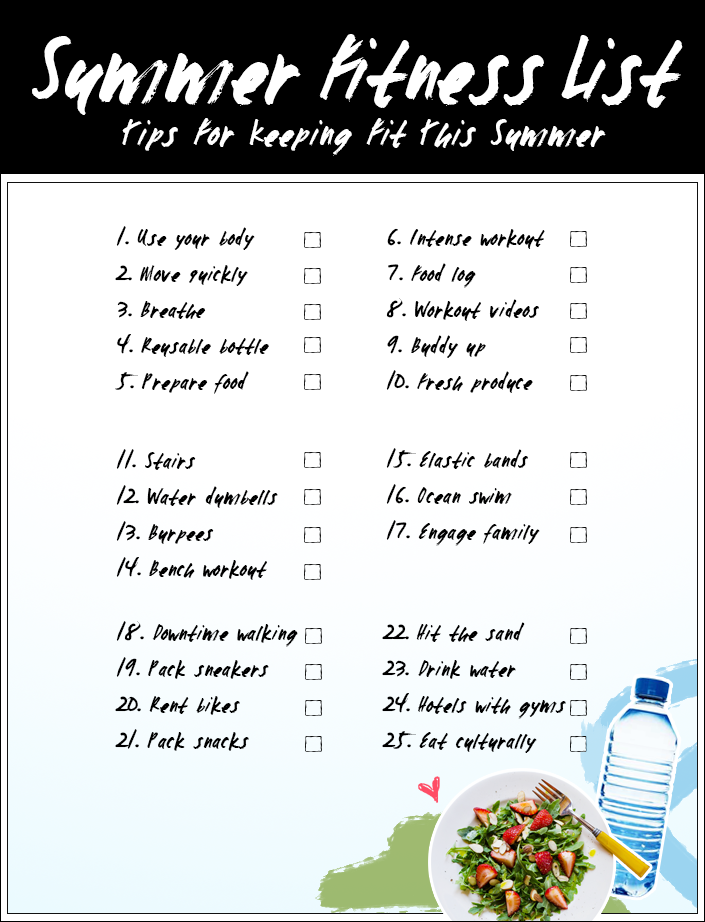
A lot of athletes train with compound exercises that involve multiple muscle groups. A bench press, for example, uses the chest, shoulders and triceps as well as the arms. This gives the athlete more bang per buck. These workouts can also be done at different times during the day to keep it interesting. This exercise can be incorporated into training programs for athletes who wish to increase their flexibility.
For both men and women, stronger muscles are essential. They enhance flexibility, agility, as well as endurance. While weight lifting is often used to build muscles it can be combined with other exercises to increase strength. Athletes must keep their stress levels low, avoid refined carbohydrates and fast food, and drink a lot of water. It is important that athletes include aerobics and stretching in their workouts. You can find more information on training as an Olympic athlete at our page.

Power cleans are also an option for athletes. These exercises require a barbell, but can improve flexibility and endurance. You can perform landmines with many different exercises such as the front squat and one-arm bent over row. These can be used in combination with the regular sit-up. A landmine can also be used to add an extra leg to your back squat.
It is possible for athletes to incorporate exercises that strengthen their muscles. These exercises can improve strength and endurance and may even include weight lifting. Others do additional exercises. Athletes must remember that training like an athlete involves intense activity. Therefore, they should avoid stress and alcohol to ensure proper muscle recovery. Athletes should also make sure they get adequate sleep and avoid processed foods, which can cause fatigue. You should reduce stress when you train like an athlete.
It can seem easier to compete in your favorite sport if you have less training. But it can also be very hard. To achieve their goals, athletes may have to cut back on sleep and food intake. Athletes must eat high-quality proteins, complex carbs, and water. They also need to avoid refined carbohydrates and fast food. This type of training can be very intense and requires extreme discipline. It is important for athletes to monitor their stress levels. They need to get enough rest.

It is important that athletes have specific exercises for each of their muscle groups. Athletes should also be able to do specific exercises for their elbows, triceps, and wrists. Dot drills are good for balance and agility. They are different from other exercises in that they target all major muscle groups. Athletes who focus on the upper body can strengthen their legs and core, as well as their core. Cutting is an important part of a athlete's training program to avoid injuries.
FAQ
What causes weight loss as we age?
How do I know if my bodyweight changes?
Weight loss occurs when there is less fat than muscle mass. This means that calories must be consumed at a rate greater than energy. The most common cause of weight loss is decreased activity levels. Other factors include stress, illness and pregnancy. Weight gain is when there are more calories than muscle mass. It occurs when people eat more calories than what they use in a given day. Common reasons include overeating, increased physical activity, and hormonal changes.
The main reason why our bodies lose weight is because we consume fewer calories than we burn. When we exercise regularly, we increase our metabolism rate which burns off more calories throughout the day. This does not necessarily mean that we will get thinner. What is more important is whether or not our body is losing or gaining weight. If we're burning more calories that we consume, we'll lose weight. But, if we consume far more calories than what we burn, then we actually store them as fat.
As we age, our ability to move around is slower and we are less mobile. We also tend eat less than we used to. This is why we tend to gain weight. We also tend to look larger because we have more muscle.
It's not possible to measure how much weight your body has lost without weighing yourself every week. There are many ways to determine your weight. You can measure your waist, hips and thighs as well as your arms. Some people prefer to use a bathroom scale while others prefer to measure with tape.
You can track your progress by weighing yourself at least once per week and measuring your waistline every month. You can also take photographs of yourself every few years to track how far your progress has been.
Online measurements of your height and weight can help you determine your body mass. You'd likely weigh 180 pounds if you were 5'10 tall and 180 pounds if you were 180lbs.
Why do we need to have a healthy lifestyle?
Healthy lifestyles lead to happier and longer lives. Good nutrition, exercise regularly, good sleep habits, stress management and healthy lifestyle can help you avoid heart disease and stroke.
A healthy lifestyle helps us cope better when we are faced with everyday stresses. Having a healthy lifestyle will also boost our self confidence and help us look and feel younger.
What can be done to increase your immune system's effectiveness?
The human body is composed of trillions if not billions of cells. These cells combine to form organs or tissues that serve specific functions. One cell is replaced by another when it dies. Cells communicate with one another using chemical signals called hormonal hormones. Hormones control all bodily functions, including growth, development, metabolism, immunity and immune system.
Hormones refer to chemicals produced throughout the body by glands. They circulate through the blood stream and act as messengers to regulate how our bodies function. Some hormones are produced within the body while others are externally manufactured.
Hormone production begins when a hormone-producing gland releases its contents into the bloodstream. Once hormones are released they move through the bloodstream until they reach their intended organ. In some cases, hormones remain active only for a short period of time. Some hormones remain active for longer periods of time and can continue to have an impact on the body's function long after they are gone.
Some hormones are produced in large quantities. Others are produced in smaller amounts.
Some hormones are produced at certain times during life. For example, estrogen can be produced during puberty or pregnancy. Estrogen helps women develop breasts, maintain bone density, and prevent osteoporosis. It helps to stimulate hair growth and maintains skin's softness.
How to measure body weight?
A Body Fat Analyzer is the best way to measure body weight. These devices are used for measuring the percentage of body fat in people who want to lose weight.
Supplements and herbs can improve immunity
You can boost your immune function with herbs and natural remedies. You can use ginger, garlic, echinacea oregano oil and vitamin C as examples.
These herbal remedies should not be used in place of conventional medical treatment. These herbal remedies can cause nausea, vomiting, stomach cramps or dizziness.
How do I find out what's best for me?
Your body is your best friend. Your body is the best judge of how much exercise, food and rest you should get. You need to be aware of your body and not overdo it. You must listen to your body to ensure you are healthy.
Statistics
- Extra virgin olive oil may benefit heart health, as people who consume it have a lower risk for dying from heart attacks and strokes according to some evidence (57Trusted Source (healthline.com)
- This article received 11 testimonials and 86% of readers who voted found it helpful, earning it our reader-approved status. (wikihow.com)
- In both adults and children, the intake of free sugars should be reduced to less than 10% of total energy intake. (who.int)
- nutrients.[17]X Research sourceWhole grains to try include: 100% whole wheat pasta and bread, brown rice, whole grain oats, farro, millet, quinoa, and barley. (wikihow.com)
External Links
How To
What does the term "vitamins" mean?
Vitamins are organic compounds that can be found in foods. Vitamins are essential for our bodies to absorb nutrients from the foods we eat. Vitamins cannot be made by the body; they must be taken from food.
Two types of vitamins exist: water-soluble vitamin and fat-soluble vitamin. Water-soluble vitamins dissolve in water easily. You can find vitamin C,B1 or thiamine, B2 or riboflavin and B3 or niacin, B3/niacin, B6/pyridoxine, folic Acid, biotin and pantothenic Acid as examples. Fat soluble vitamins are stored in the liver and fatty tissue. You can find vitamin D, E K, A, beta carotene, and other fat-soluble vitamins.
Vitamins can be classified by their biological activity. There are eight major groups of vitamins:
-
A - vital for healthy growth.
-
C - important for proper nerve function and energy production.
-
D - Vital for healthy bones and teeth
-
E - needed for good vision and reproduction.
-
K - Essential for healthy muscles and nerves.
-
P – vital for building strong bones.
-
Q - aids digestion, absorption and absorption iron
-
R – Required for the formation of red blood vessels.
The recommended daily allowance of vitamins (RDA), varies according to age, gender, physical condition, and other factors. The U.S. Food and Drug Administration has established the RDA values.
For adults 19 years and over, the RDA of vitamin A is 400mg per day. Pregnant mothers need 600 micrograms per days because it is vital for the development and growth of their baby. Children ages 1-8 require 900 micrograms per day. For infants younger than one year, 700 micrograms are required daily. However, this number drops to 500 micrograms each day for children aged 9-12 months.
Children between the ages 1--18 years old who are overweight or obese require 800 micrograms per Day, while those who are overweight or obese need 1000 micrograms. To meet their nutritional needs, children underweight and obese require 1200 micrograms a day.
Children between 4 and 8 years old with anemia will need 2200 micrograms daily of vitamin C.
2000 micrograms per person is necessary for general health. Due to their increased nutrient needs, pregnant and breastfeeding women need 3000 micrograms daily.
Adults over 70 require 1500 micrograms each day, since they lose around 10% of their muscle mass every decade.
Women who are pregnant, nursing or breastfeeding need more than the RDA. Pregnant woman need 4000 micrograms daily in pregnancy, and 2500 per day after childbirth. Breastfeeding mothers need 5000 mg per day when breastmilk is being produced.